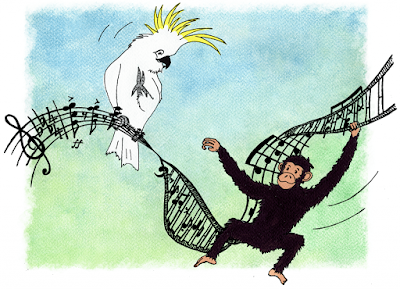.jpg) |
| (McAdams & Cunible, 1992). |
One of the most intriguing questions in music cognition research is also one of the simplest: when are two melodies experienced as the same?
At first glance, the answer might seem obvious — they share the same notes, in the same order, with the same rhythm. But a closer look, across cultures and even across species, reveals a more complex picture. What our brains latch onto when recognizing a tune involves a web of spectral percepts — the fundamental features of sound that guide humans and other animals in interpreting auditory patterns. This may sound like a niche research topic, but it lies at the heart of debates about authorship, originality, and musical ownership.
Consider hearing a melody played in a different key or on an unfamiliar instrument. Most people can still recognize it. How is this possible? Explanations often point to intervallic structure — the sequence of pitch intervals between notes — the contour, which is the overall shape of a melody as it rises and falls, or timbre, often described as the “color” of sound, including brightness, texture, and loudness.
For decades, music research treated timbre as secondary — something layered over supposedly “meaningful” musical features like pitch and rhythm. Increasing evidence now suggests timbre is not merely decorative but a core perceptual building block. Timbre may also support “relative listening,” the ability to track patterns of change across different features. Exploring it carefully could reveal flexible and universal aspects of music cognition previously underestimated.
Recognizing that humans and non-human animals may rely on different spectral cues is equally crucial for understanding music’s evolutionary roots. A melody meaningful to humans may not register as such for a zebra finch — and vice versa.
By broadening music cognition research to include timbre, spectral contour, and species-specific strategies, scientists hope to uncover the shared perceptual foundations of musicality. Such work moves us closer to answering a deceptively simple but deeply complex question: what truly makes two melodies feel like the same song?
References
McAdams, S, & Cunible, J-C (1992). Perception of timbral analogies. Philosophical Transactions of the Royal Society B: Biological Sciences, 336, 383-389.
Krumhansl, C. L. (1989). Why is musical timbre so hard to understand? In S. Nielzén & O. Olsson (Eds.), Structure and perception of electroacoustic sound and music (pp. 43– 53). Elsevier.




